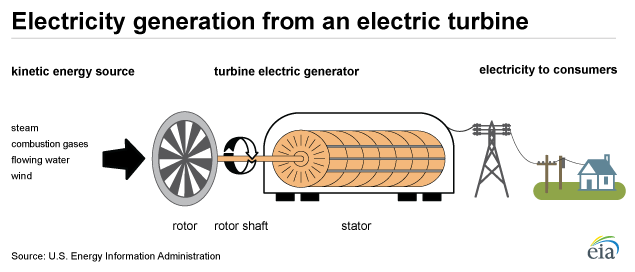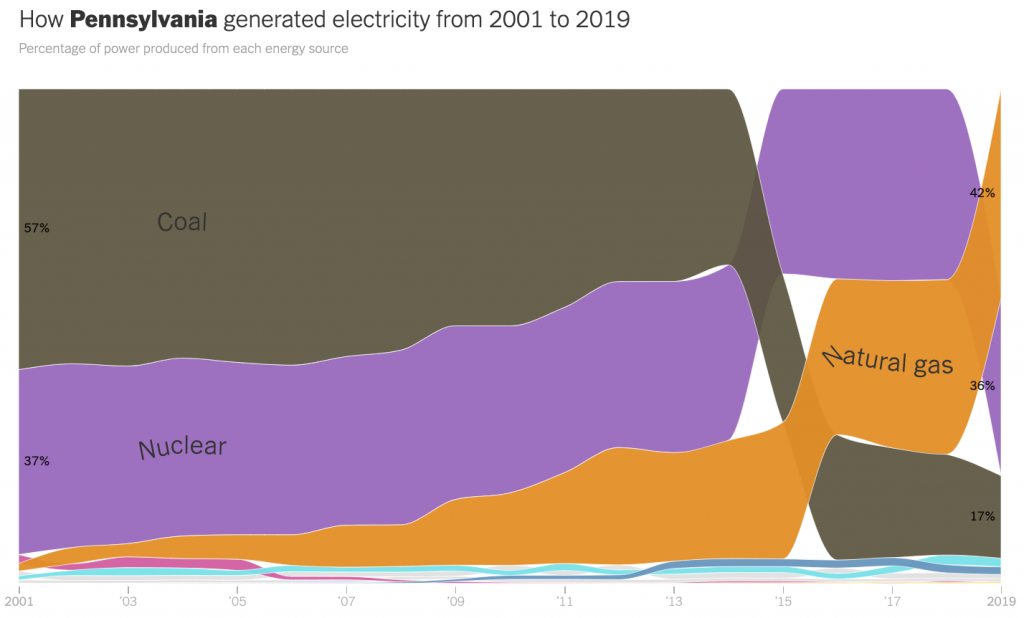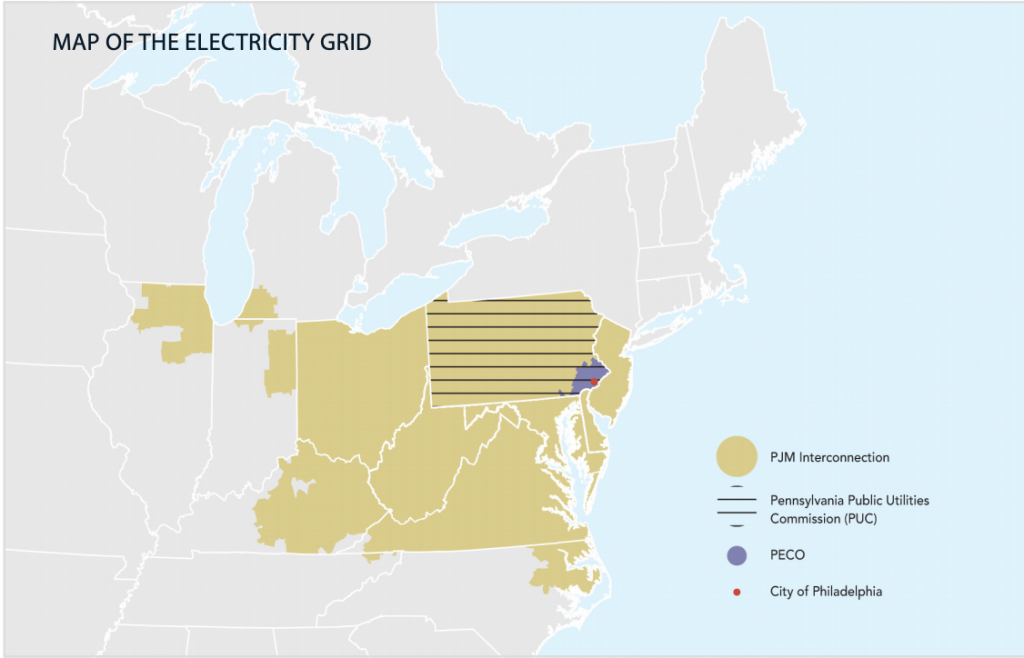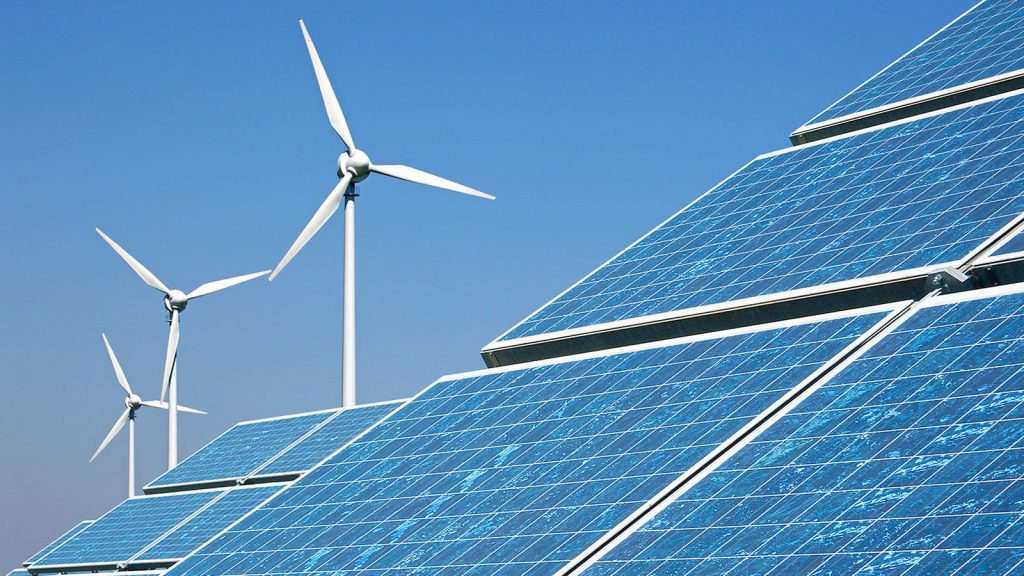Modern American society crumbles without energy. Employers who store all their files online, young drivers of gas-powered cars who rely on Google Maps to get where they’re going, residents who pay their rent and gas-powered utilities online: all their lives and operations fundamentally change without energy.
Given our reliance on energy, one would think that we all knew more about where it comes from and how it’s related to the climate crisis. But many of us don’t. And too few of us realize why that’s a problem.
So where does our energy come from? How does it shape the climate crisis? And what can we do about it? Let’s get to it!
How is my energy generated?
Different machines rely on different forms of energy. For instance, most forms of transportation in America rely on fossil fuels, from the gasoline that fills your SUV to the gasoline that powers the bus you take to work. Here, we’ll focus on how electricity is generated (you’ll see why soon).

Most electricity generated today is done by pouring water (in dams) or steam (in most U.S. power plants) through a wheel (i.e. rotor), which spins a turbine. A generator converts the energy of the spinning turbine into electricity. As shown below, most power plants in the United States, and Pennsylvania, use fossil fuels to boil water into steam. They then funnel that steam through the turbine to generate electricity.

In Pennsylvania, a measly 5% of the Commonwealth’s generated electricity comes from renewable sources. Chances are, the outlet you use to charge your phone is delivering you dirty energy. Why is this the case? Well, let’s talk about how you get your electricity.
How do I get my electricity?
Our electricity system, dubbed “the grid,” is complex and confusing. Let’s start with a broad view. The U.S. does not have a national grid, but a host of Regional Transmission Organizations (RTOs) systems overseen by the Federal Energy Regulatory Commission (FERC). The RTO from which Pennsylvanians receive their electricity is from the Pennsylvania-New Jersey-Maryland Interconnection, or PJM, shown below.

PJM controls the wholesale electricity marketplace across 13 states, including Pennsylvania, and does long-term planning around what fuel sources are used to generate electricity, where that electricity is generated, and how it is sent to places that need it. Each state sets its own regulations on PJM. Pennsylvania’s Public Utilities Commission (PUC), for instance, determines how much your electricity costs, i.e. “set rates.” At the municipal level, the Philadelphia Electric Company (PECO) distributes electricity to residents.
Importantly, PECO is owned by Exelon, a for-profit energy company that owns more than a dozen nonrenewable power plants in the state.

This trend is not uncommon. Many utility companies have deep investments in the burning of fossil fuels. Many are also dangerously close to their PUCs and respective governments, bordering corruption. For instance, FirstEnergy, an energy company operating across PJM and throughout Pennsylvania, recently spent $61 million in bribes on Ohio lawmakers to pass a nuclear energy bailout law. The energy companies, who are guaranteed monopolies from the state, siphon profits off of ratepayers, and because media outlets rarely cover these stories, few people in the public know enough to care about it.
Energy and the Climate Crisis
Energy is the glue that holds modern society together, but that glue bears the stain of fossil fuels in Pennsylvania.
From the gas in our buses to the plastic of our candy wrappers, fossil fuels have infiltrated almost every aspect of our lives. As a result, using energy or energy-intensive products exacerbates the climate crisis. However, it doesn’t have to be this way. We can decarbonize our grid and our economy. But we would need to electrify everything first.

Renewable energy, like that of solar power, does not operate like liquid fossil fuels. Remember that most power plants burn fossils to spin turbines and generate electricity. In contrast, solar energy is converted into electricity almost immediately. This means that renewable energy is best suited to serving electrical devices, like computers and medical equipment. This also means it’s poorly suited for machines that are directly reliant on liquid fossil fuels, like airplanes and gas heating units. This is a serious problem, considering that electricity accounts for 28 % of America’s greenhouse gas emissions.
So we can decarbonize the grid, but that won’t decarbonize the economy. Doing that will require us to electrify everything. Simply enough, we need to replace our machines that rely on fossil fuels with machines that rely on renewable energy. However, because we have delayed the transition for so long, we need urgent and rapid mass action, including political and social movements.